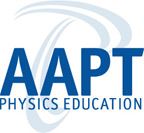- Home
- What We Do
- Laboratory Immersions
- Immersions 2021
- Imm2021Scranton_ParticleDetector
Univ. of Scranton (PA)
Silicon Photomultiplier based Particle Detector
Dates: June 7, 2021 to June 9, 2021
Number of setups available: 2
Maximum number of participants: 4
------------------------------------------------------------------------------------------------------------------------------------------
The basic physics
Silicon Photomultipliers (SiPMs) detect the light produced by ionization, Compton scattering, photoelectric effect or Cherenkov light when a particle travels faster than speed of light in a medium. SiPMs are operated in reverse bias mode, creating a high electric field on a p-n junction and thus a large number of electron-hole pair per single photon. They are gaining popularity in research due to single photon capabilities, low power and immunity to magnetic fields.
Importance of this experiment for current physics, metrology, or technology
Silicon photomultipliers (SiPMs) are a novel photodetector with high gain and such require little circuitry to be turned into a full detector readout, this makes them ideal for advanced lab physics instructors to teach the instrumentation techniques in particle, astro-particle, nuclear physics, and even nuclear medicine
Skills
- 1) Participants will learn the readout technique for Silicon Photomultipliers while using very little circuitry
- 2) Participants will construct their own gamma ray detector by using scintillating crystals. Participants will build a gamma ray detector and do gamma ray spectroscopy with it
- 3) Participants will learn about calibration procedures depending on detector type and particle type, for instance different mechanism for gamma rays versus muons.
- 4) Participants will familiarize themselves with data acquisition techniques in particle, astro-particle and nuclear physics.
- 5) Participants will be using python or C++ to acquire and process the data.
Tentative Outline of Immersion
Participants will use SiPMs for studying the performance of three kinds of detectors: plastic scintillators, scintillating crystals, and Cherenkov detectors. First day of immersion participants will learn about the physics of different detectors and silicon photomultipliers, then create the readout circuit on the proto-board, assemble the crystal detector, install the proper software on computer. Second day will be focused on software for DRS4 board and familiarize themselves with DRS4 data acquisition board, coding, and using a series of radioactive isotope to study Compton Effect and gamma ray spectroscopy. Third day will be constructing plastic scintillator and Cherenkov detector and study their response to cosmic ray muons.
What to bring
Participants will need to bring a laptop computer with Ubuntu Linux preferred however windows or mac would be fine, we can make use of VMware player and are currently working on making it native to windows. A notebook will be needed as well.
Safety Concerns
There is no safety concerns for these, just proper handling techniques of exempt radioactive sources.
Cost of Apparatus
At the core of the experiment is DRS4 evaluation board developed by Paul Scherrer Insitut Switzerland
The cost of this board is about $1,700 as long as it is used for research or education. Note the performance of this board is equivalent to oscilloscopes in the $10,000 range.
https://www.psi.ch/en/drs/evaluation-board
The cost of the SiPMs is about $70 each, and the cost of the crystals, plastic scintillators is about $30 each, circuit elements and protoboard ~$20. An instructor for under $2000 total can train undergraduate students in instrumentation techniques common in these areas of physics.
Mentors: Abaz Kryemadhi
Abaz Kryemadhi finished his Bachelors of Science degree in Physics from University of Tirana Albania, followed by a post-bachelor program at University of Siegen, Germany. He completed his PhD degree in Physics from Indiana University in 2004. He continued his work at Fermi National Laboratory as a post-doc researchers with University of Virginia working on D0 experiment. He has been at Messiah College since 2006 with current research interest in development of novel detectors for future asto-particle experiments. Besides teaching and research enjoyment he is very interested in how to bring novel research ideas from particle and astro-particle physics to level accessible to undergraduate students.
Please note that the Jonathan F. Reichert Foundation has established a grant program
to help purchase apparatus used in Laboratory Immersions. Limitations
and exclusions apply, but generally speaking the Foundation may support
up to 40% of the cost of the required equipment.





